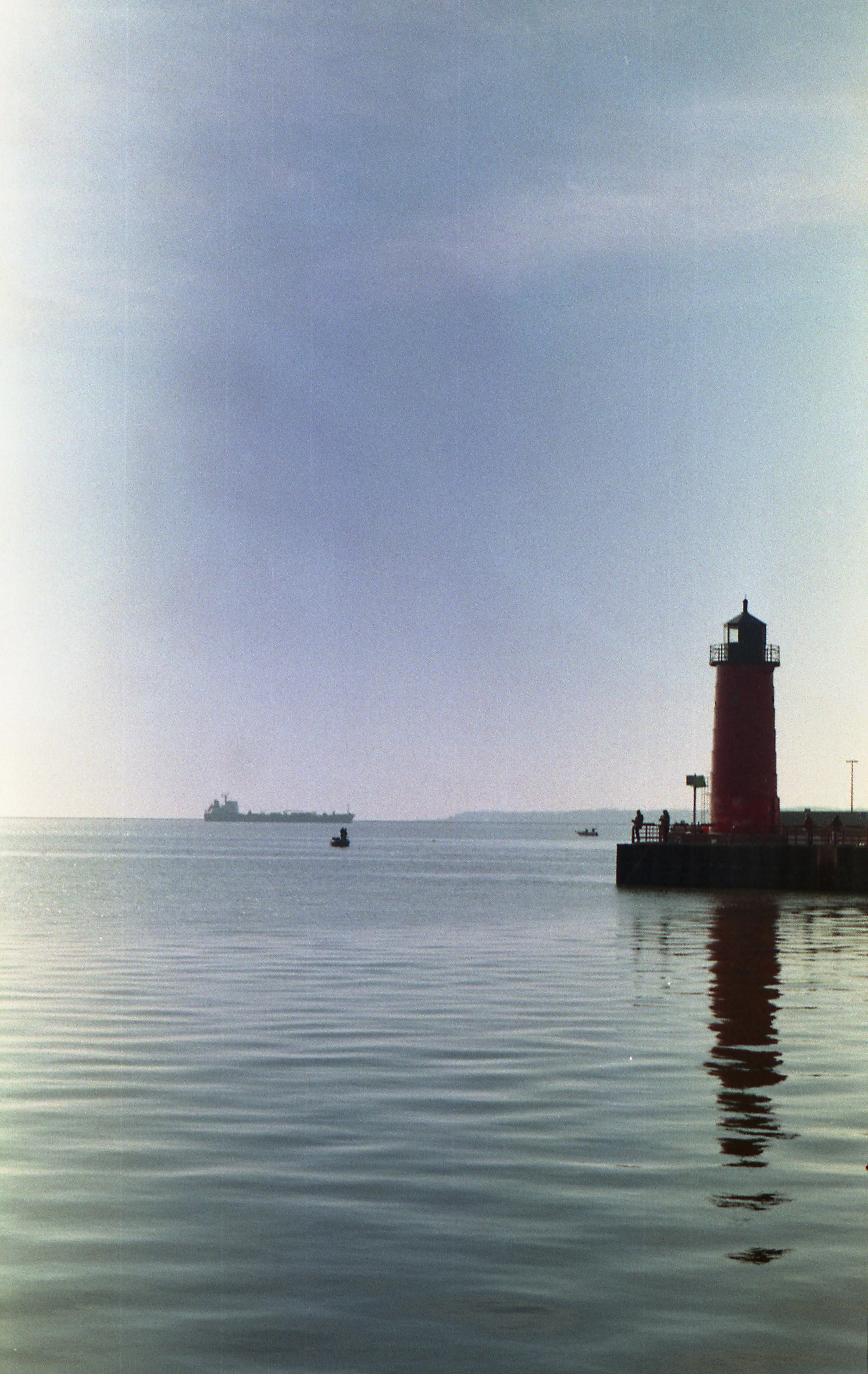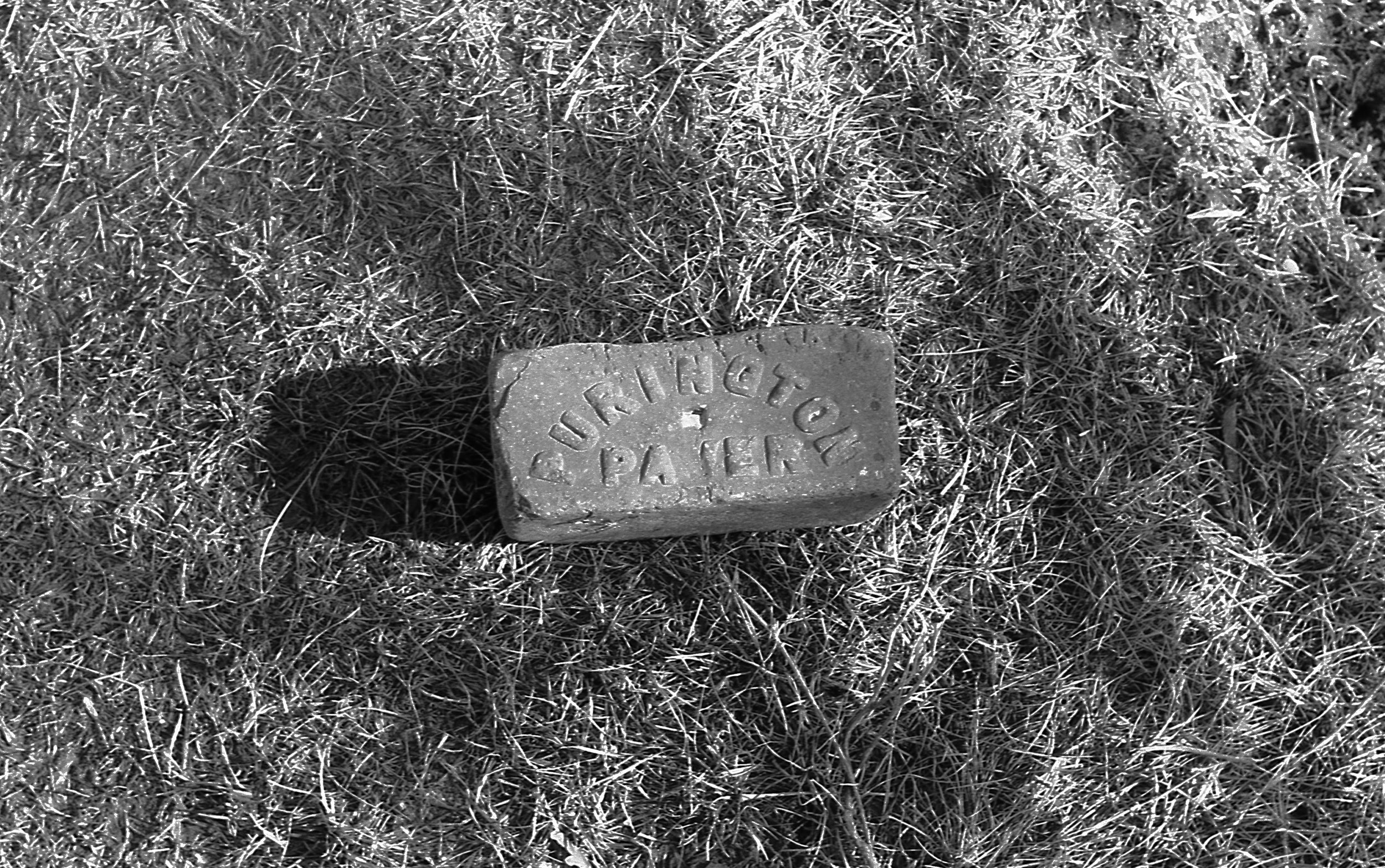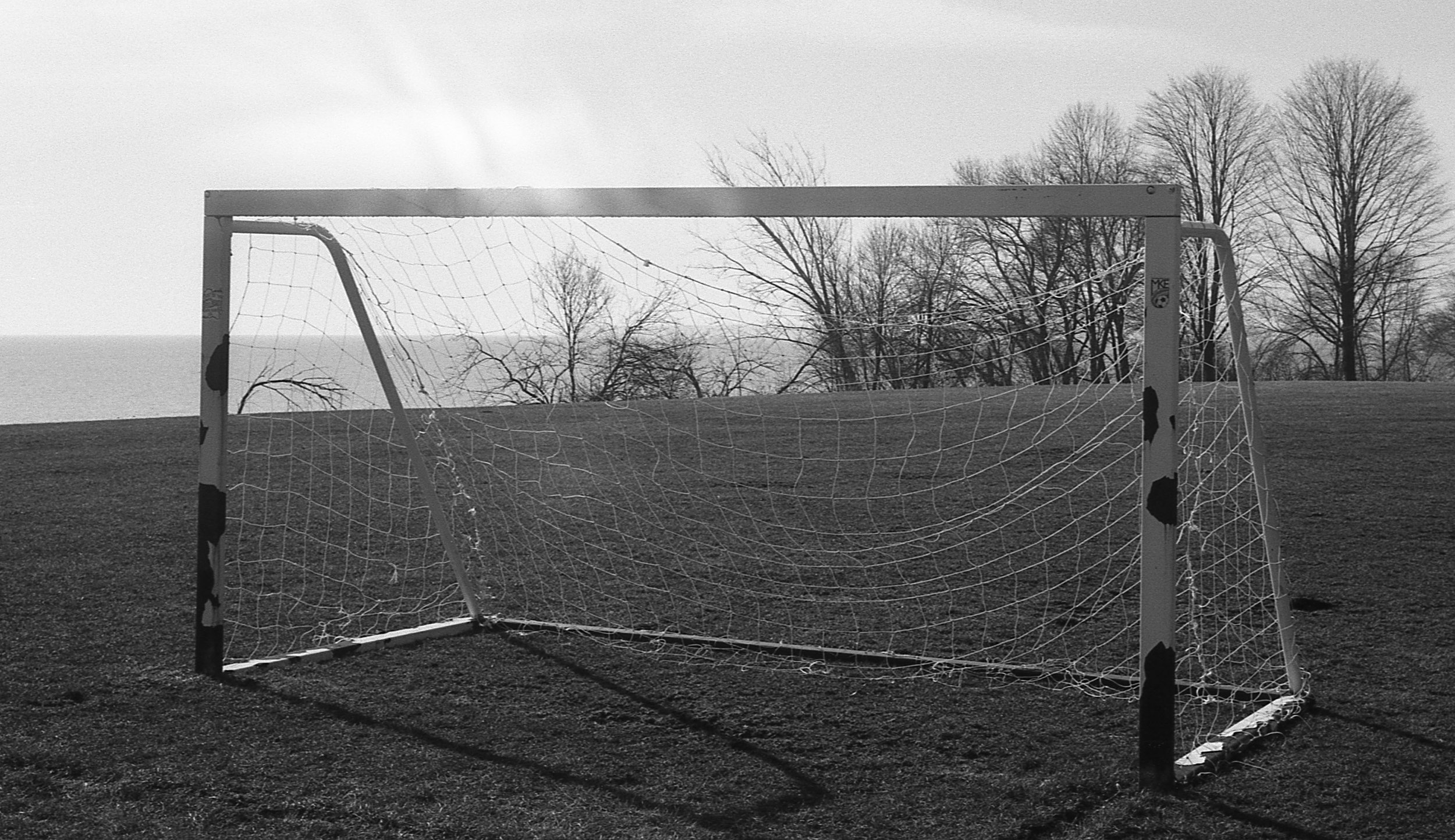March 5th 2023
Ansco Super Regent
Known as a photographic mainstay of America, Agfa-Ansco sold a staggering amount of cameras, from simple box designs to elegant works of leaf shutter reflex engineering. During the success of Agfa’s Karat line, and their first real push at using true 35mm cassettes, Ansco announced the first ‘budget’ cameras to enter the ever growing miniature film market. Debuting at the 1954 IRE National Convention, the Ansco Super Regent would go on to be produced for around a decade to moderate success.
The Rangefinding Regent
The Ansco Regent is the same camera as the Agfa Solinette, Super and non, only changing the branding and country the camera was released to. In the mid 1950s, the folding 35mm camera was gaining momentum, and seemed to be spearheaded by a few companies in particular; Agfa-Ansco of course, Balda, Welta, Zeiss, and Kodak to name a few. They all took design queues from each other, but having different operations entirely. After the continued success of the Agfa Karat, the Karat 36 was eventually marketed in the U.S. as the Ansco Karomat. It seems to have sold well enough, around five or so years but was hindered by its very high price tag. This would be the only Karat model to garnish the Ansco name, and the next 35mm cameras to be released would take a completely different route.
Looking through the military focused Signals magazine from 1954, they covered the IRE (Institute of Radio Engineers) National Convention and some of photography’s newest offerings. Five new Ansco models were shown, the 6x6 120 Super Speedex, the 35mm ridged bodied Memar, and the folding 35mm Regent. The magazine only had a brief mention of the Regent, focusing more on the affordability and quality of the Memar, and the technical prowess of the Speedex. Looking through other magazines and clippings, little was mentioned of either the Regent or Super Regent after 1955 besides Ansco’s own ads. However, there is a 1977 issue of Photographica stating that the Ansco Super Regent, for one reason or another, has eluded classic camera status and was unappreciated then and duly now.
An elegant design was at the forefront of the Ansco Regent and Super Regent. Minimalistic with extraordinary build quality and use of materials makes these cameras look as good today as they did 70 years ago. The choice of a plastic like textured covering and slightly polished metal finish make for a highly wear resistant camera. This was perfect for its pocketable nature. While closed there is only a raised logo and name of the Super Regent on the lens door leading to an extremely clean and intentional design.
Looking at the back of the camera, to reveal the lens you have to look to the left side and press a small chrome button. The cameras lens and bellows are self erecting, and will push the lens door down at a startling speed. In one motion this locks the door in the correct position, ready to take a picture. To close the door, there are two textured metal tabs, on the sides of the metal struts, that you press down on and allow you to fold the camera closed.
You can load the camera whether the lens is extended or not. To open the back, look at the same side that the lens release button is on, and pull the tab below it down. This will open the back. Pull up on the rewind knob and load the film normally. Once the film is on the takeup spool and the camera back is closed, you will need to reset the frame counter above the cold shoe. There is a sliding switch with an arrow on the back, with a lock that disengages from a button to the right of it. Each press of the button advances the frame counter by one and you need to move the dial to A before winding. This gives you a two frame buffer to get to the unexposed part of the film before you take the first picture. This button also serves as the rewind release if you hold it in.
The Super Regent has double exposure prevention, so when you wind with the knob on the right, you will need to charge and fire the shutter before you are able to wind to the next frame. Looking at the lens from above, and starting closest to the camera body, you have a depth of field scale and focusing ring. The focus scale is from infinity and 35 feet down to 3.5 feet. When focusing, there is no parallax correction or frame lines in the viewfinder, but a very large circular rangefinder patch for focusing.
Above the focus is the aperture scale going from f/3.5 to f/22 and a sliding tab to select it. Now moving the camera to have the lens facing you, the shutter speed can now be changed by rotating the knurled ring around the lens. The speeds are from bulb and one second, up to 1/500th of a second. Above the lens is the shutter charging lever and to the left of that is the PC sync socket. Underneath the PC sync on the left hand side is a green tab to select between X and M sync. A few additional things, the Super Regent has a threaded cable release, a tripod socket on the bottom to one side, and a film speed reminder on the rewind that can be adjusted underneath.
THE SPECS AND FEATURES
Shutter Speeds - bulb, 1 second to 1/500th
Aperture - f/3.5 to f/22
Meter Type - none
Focus - rangefinder, unit focusing, infinity and 35 feet to 3.5 feet
Shutter - Synchro-Compur (later models LVS), metal leaf shutter
ASA - n/a
Lens - 50mm Agfa Solinar, 4 elements 3 groups
Flash Option - PC socket, M/X sync, all speeds
Batteries - n/a
Film Type - 35mm
Other Features - double exposure prevention
The Experience
This was an old purchase of around five or more years ago. From what I can remember, I stumbled across another Ansco Regent, the non-rangefinder model, and liked it enough to search for a deal on the super version. I remember them showing up more frequently online then, but all in ‘parts’ condition. After a few months of looking, I found a possible candidate. Inexpensive, not working, and stuck is what it was advertised as and ultimately how it arrived. I remember trying a few quick and easy tricks to get the camera to do anything, and ultimately put it to the side. This would evolve into an extraordinarily long set of repairs spanning years.
A while later I found myself repairing another camera with a host of similar problems, the Balda Super Baldinette, and decided to give the Ansco another shot with this new knowledge. I removed the shutter from the bellows, removed the lenses, and soaked the helicoid in alcohol. Nothing. After a lot of attempts, longer times, and harsher chemicals, what ended up working was boiling water, an oven, and lots of slight movements of the helicoid. I had to use carefully padded wrenches to initially even move the helicoid halves, a practice that can be done but can also permanently destroy components or mar surfaces if you are not careful. After days of back and forth heating, boiling, solvents, and twisting, it finally was moving. Removing the dried green grease and applying new grease on the helicoid helped, but the camera still needed a lot of work.
The shutter had oil on the blades, and a soak in alcohol initially helped but a thorough cleaning of the mechanism and blades was necessary. After another few days of back and forth cleaning and testing, the shutter was finally working, the speeds sounded correct and I attached it again to the bellows. Next was the rangefinder and I would consider myself pretty well versed in calibrating a rangefinder, but this one was a bit tricky. Well more than a bit tricky. A word of warning here, the dreaded Agfa grease is known to freeze the focusing helicoid, but it can be used on other parts of the camera. On my first attempt of focus adjustment, the set screw on the fine adjustment sheered clean off. A lesson learned, and one that would make me set the camera aside in irritation for a couple of years.
As winter comes along, I tend to carry a camera of some description in my inner jacket pocket for most of the season. Looking at what I had around, I found the Super Regent again and remembered its shadowed past. Determined at getting the camera to work I dove back into adjustments with my few years of additional experience. A tool I have found incredibly useful in the last couple of years has been a laser tape measure, and a 35mm frame ground glass I made for checking focus. Before that, I would use wax paper and check only infinity focus, which was a good method but hard to keep perfectly flat on the film plane.
I used this new method, and to my suspicion, the focus was way off. This would be a long and fruitless process of me trying to get the rangefinder and film plane in sync, only to realize after many hours that I forgot something important. It hit me one day, when I took apart the helicoid years ago, I did not mark where the halves detached. For context here, depending on the manufacturer, the helicoid can have between one and a million starting threads and you need to mark which point the halves separate or the focus will be off. Some cameras have a way to compensate for this slight difference, but the Super Regent does not. I must have forgotten to mark the halves in the wrenching attempt to get them apart, no wonder I was having issues.
After another disassembly and marking each of the starting threads, around twelve of them, I checked for the best focus at the minimum distance, reassembled making sure the original paper spacers on the mount were correctly in place, and I finally had a properly focused lens. A final adjustment of the rangefinder was much easier now, and the camera was ready for a new focus test with film.
Three or so pictures into my walk, the shutter seized. The bellows also developed a decent size hole, and the takeup spool got stuck in rewind… the camera was fighting me every step of the way. Trying to stay positive and not skip the camera across the nearby lake, I dove back in. Making sure to clean the shutter multiple times with days in between to make sure no more oil would travel, patched the bellows again, and struggled with the takeup problem. I initially thought that it was a pin not engaging with the sprocket spool. Fumbling around and trying to work out the firing sequence, not being able to watch it as it was stuck, I saw what was to be the final trick of the regent. There are two gears that mesh together from the sprocket spool, and the screw that held one of them flat was unwinding as it turned. Tightened back together, the Super Regent was fully calibrated, patched, cleaned, and finally done.
On to the first true film test, I wanted to make sure that the infinity focus was correct along with the closest focus. I chose an extremely bright day in the snow and took a few pictures on the beach and of some windowsill plants. Perfect focus, but a tiny pinhole in the bellows had to be patched once again. A true wave of relief to know the camera was fully working. The camera then found itself in my jacket pocket again, going with me everywhere.
I took the Super Regent loaded with some expired color film to a greenhouse, under bridges, through parks, and on the boardwalk. After developing the roll, you could tell the film was expired, but I really like the pictures. The one of the lighthouse and cargo ship in the background is one of my favorites. The results were stunning, really showing how great of pictures the Super Regent can produce. The next day I decided to shoot one last black and white roll to not only test the Super Regent, but to try a new film and developer combination. A great test, given the day was extremely sunny and I was guessing most of the exposures after an initial reading. Stopping down the lens really delivers in detail and handles lens flair well, even when shooting into the sun. With this final test, I can say that I am thoroughly impressed with the Ansco Regent’s results.
I don’t see this camera as hours spent or anything of the sort. I see it as a camera saved and one that will go on to have many more years of service. I love the challenge, and find myself many times multiple hours into a repair and glancing at the clock in the early hours of the morning. I have taken this camera completely apart, more than multiple times, to the point where I feel that I could build one from scratch. Even after years of work and a lot of struggle with this camera, I can say it still makes the list of one of my favorite rangefinders. Pocketable, a bright focusing patch, heavy and solid in the hand, and a great sharp lens lead to an almost perfect shooting experience. A beautiful combination of Agfa-Ansco design and engineering at their finest. If you are looking for a folding rangefinder, the Ansco Super Regent or Agfa Super Solinette is an excellent choice and a camera I really came to adore.












